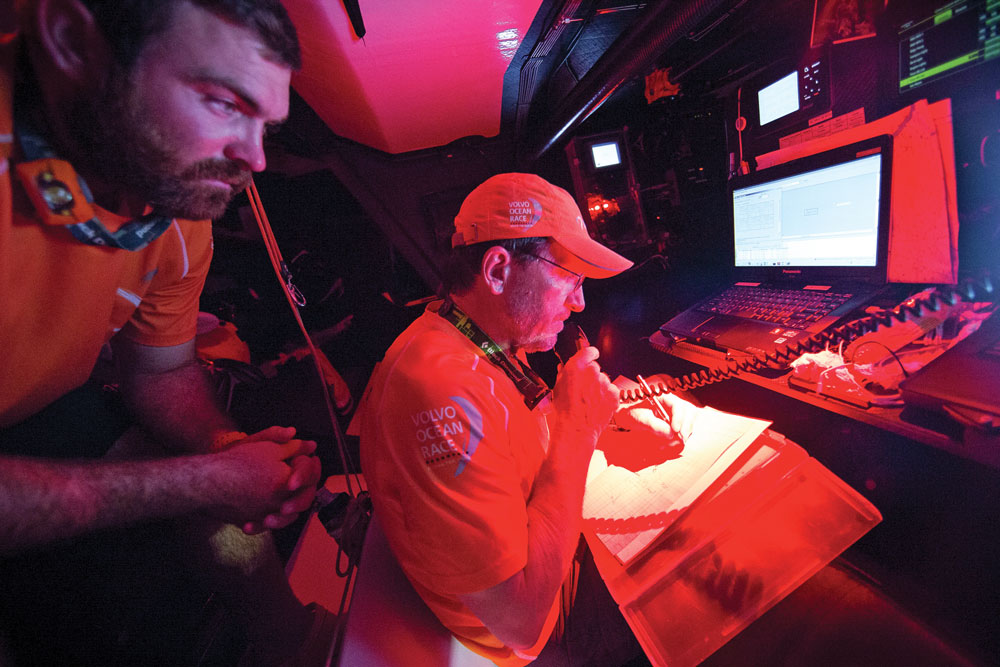How to get help in an emergency
Getting assistance at sea starts with knowing how to reach help
Days on the water are often great, but things can go wrong. When they go wrong, your ability to get help is determined by your communication ability, and it’s important to know the gear and communication protocol that will put you in position to get the help you need.
Nearshore and offshore communication are different. When nearshore, you can use your VHF radio. Once you are 20 miles or more offshore, you will need more advanced communication equipment.

How you ask for help on the radio matters, and there are protocols for emergency radio communication.
There are two formal distress calls and a safety information call.
Mayday is the most urgent request. “Mayday” is repeated three times for clarity, followed by details about the boat and the situation. This call is reserved for cases where there is immediate danger of losing life or the vessel itself.
Pan Pan is used when the safety of a person or the vessel is in jeopardy, but there is no immediate danger. This phrase is pronounced “pahn pahn” and is again repeated three times, followed by details about the boat and the situation.
Securité is reserved for marine safety broadcasts. You may use it when entering a very constrained navigational area or if you come upon a hazard such as a floating log in a channel.
When making a radio call, it is critical to supply all the relevant information:
Who: State the name of your boat and the MMSI number.
Where: Supply your position to the best of your ability. GPS position is best, but a relative position will work as well. (“Five miles due east of the lighthouse.”)
What: Describe your emergency and the type of assistance you are requesting.
Crew: Give the count of your crew, including yourself, and note any injuries.
Boat: Describe the boat’s size, hull color and other distinguishing features. “We are a white 42-foot sailboat with blue canvas.”
Help offshore
Your radio is still important as you venture offshore, but satellite communications will be the most efficient way to get help. There are several satellite devices to consider:
An Emergency Position Indicating Radio Beacon will communicate your distress call to rescue services and your position and the identity of your boat to global rescue services (assuming the EPIRB is properly registered). Once triggered, the EPRIB will communicate for 48 hours. An EPIRB is registered to the boat.
A Personal Locator Beacon operates exactly like an EPIRB but is less expensive and has a smaller form factor. A PLB is typically small enough to fit into a jacket pocket and will transmit for 24 hours once triggered. A PLB is a personal device and is registered to an individual.
Satellite Messengers have SOS capabilities similar to an EPIRB or PLB. There are several brands of satellite messenger on the market today, including Spot devices or the Garmin inReach.
The communication path of an EPIRB or PLB is managed by an international government consortium. The device communicates with a global network of satellites and the consortium transfers your distress call to the nearest emergency responder. Satellite messengers use a commercial intermediary. Your distress is received via satellite, transferred to the firm operating the device and then transferred to the nearest emergency responder.
There is no real “best” when it comes to satellite communications and it’s a good idea to carry several devices, an EPIRB, PLB and a messenger. Satellite distress calls are complex, and it can take a bit of time for your call to be relayed to emergency services. Placing calls over several different devices can be helpful.
A vast majority of satellite distress calls are false alarms. This is such a large problem that emergency responders will qualify a distress call before deploying personnel. Placing calls across multiple devices can qualify your distress call very quickly, improving the response time by emergency personnel.
We all dream of days on the water, and preparing yourself to get help when you need it is an important step to take.

Comments